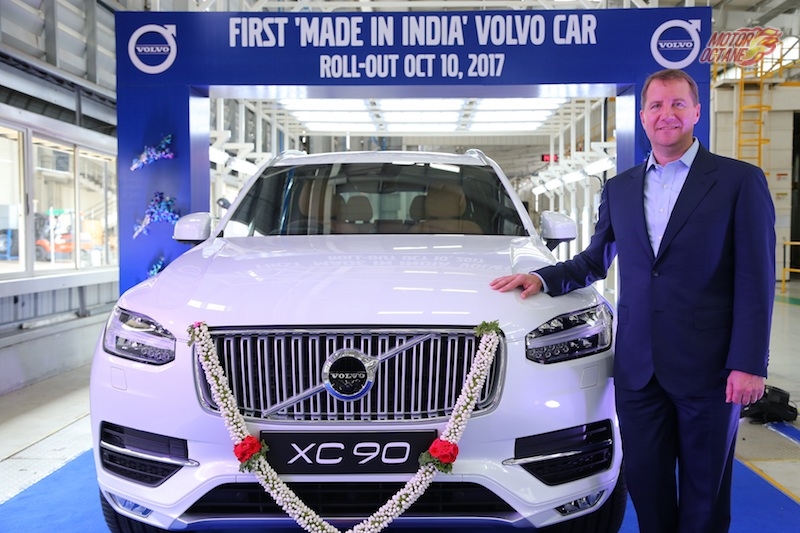Volvo rolls out first locally assembled XC90 in India

Volvo Cars has rolled out its first-ever XC90 from its Bengaluru plant.
This is the company’s first Made-in-India vehicle. Technically, this is the first locally assembled Volvo in India. Mercedes-Benz, BMW, JLR India and Audi are already locally assembling cars in India. Volvo was the only automaker that imported its entire vehicle as a CBU (complete body unit). This meant higher excise and taxes on it.
The assembly operations of the Volvo brand will happen near Bengaluru. That is even where the Volvo bus factory is also located. The XC90 is based on the SPA model vehicle architecture.
“It’s a moment of great pride for all of us at Volvo Cars”, said Charles Frump, the newly appointed Managing Director for Volvo Auto India. “The roll-out of first locally assembled Volvo Car speaks volumes for the company’s commitment to grow further in India. The last three years have been good for us in India and we noticed a positive and encouraging growth in terms of increased segment share, world-class product and new dealer appointments.
With global standards in quality, we are a formidable luxury car company in India and on-track to gain a bigger share of the segment.”
India has shown a great long-term potential for a fast-expanding luxury segment and the decision to assemble Volvo Cars locally has provided the company a strong platform to achieve 10% segment share by the end of the decade. The assembly operations is located near Bengaluru in southern India and focus on models based on Volvo’s SPA modular vehicle architecture. Apart from the XC90 more models on the SPA architecture are slated for local assembly and an announcement on the same will happen at a later stage.
While the Indian luxury market is still relatively small, it is forecast to grow rapidly in coming years. Volvo currently has a segment share of about 5% and aims to double this by 2020. Volvo Cars in India have had a robust 32% growth in sales volumes in the past two years and the 2017 trend is as per our plan to achieve 2000 cars, which will witness a growth of 25% year-on-year.

Comments